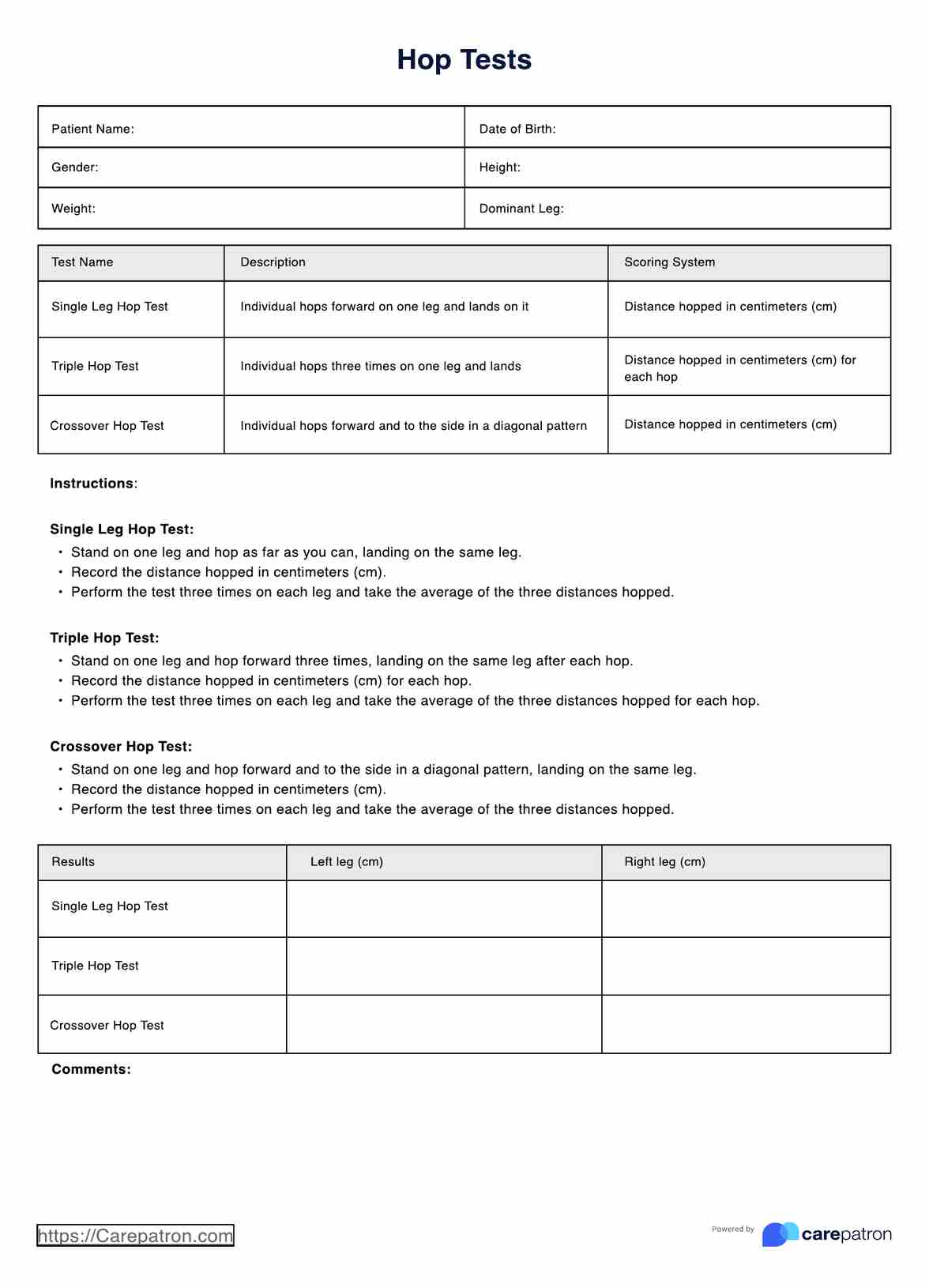Carepatron allows you to easily customize the hop test template by adding or removing sections, adjusting the layout, and modifying the content to suit your specific needs and clinical settings.

Hop Tests
Discover how to administer hop tests using our step-by-step guide and template, making it easy for healthcare professionals to track patient progress.
Hop Tests Template
Commonly asked questions
Yes, Carepatron enables seamless sharing of hop test results with your patients, allowing for better communication, goal-setting, and progress tracking throughout the rehabilitation process.
Carepatron is a versatile platform compatible with multiple devices, including desktop computers, laptops, tablets, and smartphones, and it supports various operating systems, ensuring accessibility for healthcare professionals and patients alike.
EHR and practice management software
Get started for free
*No credit card required
Free
$0/usd
Unlimited clients
Telehealth
1GB of storage
Client portal text
Automated billing and online payments











